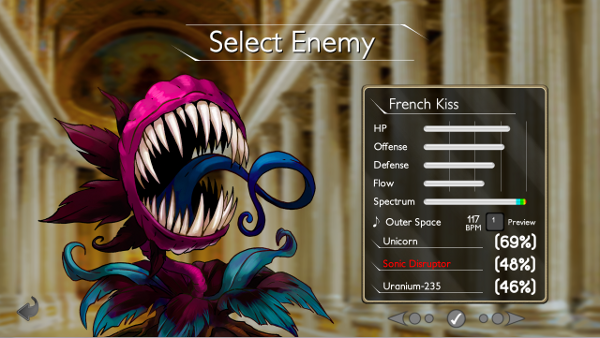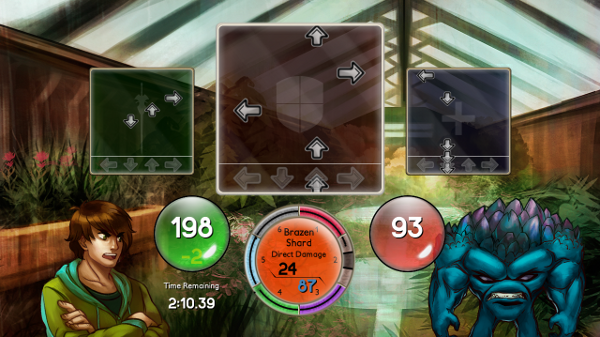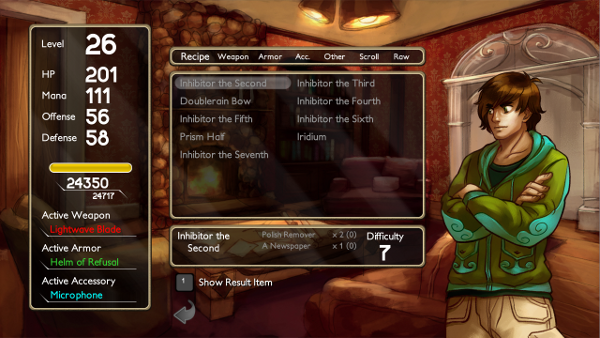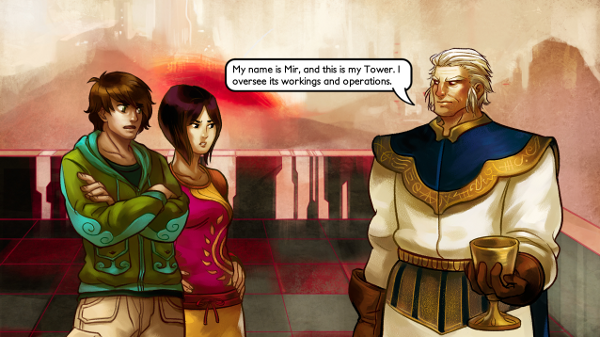There are some games that simply shouldn’t work.
For example, Sequence by Irridium Games, a crazy mash-up lovechild between a finger-pounding rhythm game with an old-school hard core RPG.
Surprisingly, it works well for the most part, and with a price tag of US$4.99 on Steam — I got mine for US$2.49 on Black Friday sales last month — it is a steal.
Sure, this indie game is not perfect and some kinks could be ironed-out, but for the price point and fun I had, I’m not complaining.

The heart of Sequence are the rhythm gameplay segments, where you have to mash keys in tandem with the beat of a song. Anybody who has played similar games in the genre like Guitar hero or Elite Beat Agent will find the mechanic very similar.
What makes Sequence different though is that the rhythm game is wrapped around a RPG shell. Each rhythm segment is a battle with monsters as you cast spells to slash their hitpoints to zero. Win the battle, and you get experience, loot and improve in stats, like in a RPG.
Battle, music, fight!

So how do you fight? Each battle screen has three panes — the monster field (red), the spell field (green) and the mana field (blue).
Monsters try to reduce your hitpoints to zero, and this is represented by falling beats in the red field that you have to try to hit with the right button. Miss a beat, and you take damage.
Have your hitpoints reach zero, or if the song times out before you defeat the monster, and you lose the battle.There is no penalty to losing the battle, and you can retry battles after switching inventory or spell slots (of which you have a limited number).
You kill monsters by casting spells, which is also represented by hitting the right beats, but in the green field instead. Lastly, you need mana to power the spells, which is represented by blue field. Strike the right notes on this field, and you gain mana. Missing a beat has no penalty on this field.
At any one time it is likely that at least two fields will have falling beats, and every battle is a frenzied fast-paced affair as you decide whether to take damage, do damage, or regain mana.
It sounds complicated, and at times you will curse the game’s difficulty, but the mechanic plays well and is overall well thought out.
Storyline and RPG elements

The RPG portion of the game is the weaker part of the mash-up. It is essentially linear, and parts of it are frustratingly repetitive as you fight the same mob over and over again to get a particular item drop so that you can progress.
The storyline, however, was a blast to play through. Every line of dialogue is voiced, and the voice acting is excellent — a surprise for such an indie game that was put together by such a small team.
The hand-drawn visuals are colourful and serve to flesh out the story of our protagonist who woke up in a strange tower with no memory of what he was doing before. Standard RPG fare, but the story was good enough that I actually found myself caring about how the game would end when I neared the last few levels.
The final ending, though, threw me for a loop, but I won’t spoil it for people who haven’t played the game.

Last words
The game is short — which is perfect in this case — and I completed in about 13 hours. Don’t expect it to be easy though, and some of the rhythm segments are just brutal, even on normal difficulty. For example, having to hit 150-note combos in order to learn certain spells can make you tear your hair out.
If you like rhythm games and RPGs, or you want to try something fresh and different, then definitely check this one out.
I’ll also be doing more reviews of indie games over the holiday period; stay tuned!




